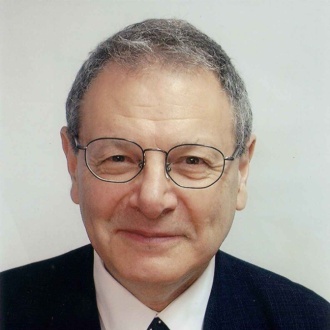Vaetchanan: The Heart of Religion
The Curve
Have you ever noticed the curve of the Ten Commandments?
The first three Commandments, I Am Your Lord, Have No Other Lords and Take Not My Name in Vain are observed in the heart. They are matters of faith and thought and form the Jewish creed. The second set of Commandments, observing the Sabbath, Honoring your parents and the prohibitions against murder, theft and adultery are observed in action[1]. These Commandments are matters of conduct and are thus Jewish deeds. The third and final set of Commandments prohibits false testimony and jealousy and is observed respectively by the mouth and in the heart. These are matters of honesty and decency and are part of the Jewish creed.
The Commandments begin with creed, move to deed and return to creed.
Three Bridges
In fact we can break it down even further. The first set of Commandments has two sub sections.  The first two commandments, to believe in G-d and the prohibition against Idolatry, are entirely faith based and are observed exclusively in the heart. The last Commandant, Take Not My Name in Vain, is a blend of faith and oral action. Our reverence for G-d is expressed by our reluctance to utter His name cavalierly. The third commandment is thus a bridge between the faith based and action based commandments.[2]
The first two commandments, to believe in G-d and the prohibition against Idolatry, are entirely faith based and are observed exclusively in the heart. The last Commandant, Take Not My Name in Vain, is a blend of faith and oral action. Our reverence for G-d is expressed by our reluctance to utter His name cavalierly. The third commandment is thus a bridge between the faith based and action based commandments.[2]
The same bridge is evident in the second set of Commandments. The action based Commandments begin with the observance of the Sabbath and honoring parents. These are action based, but they entail a generous infusion of mind and heart. The Sabbath is primarily a meditation on creation and honoring parents is an expression of gratitude and love. These are action based Commandments, but they require much more mindfulness than the second subsection of this set, the prohibitions against murder, adultery and theft. Those are purely a code of behavior irrespective of how we feel about them. We might want to steal and murder, but so long as we don’t translate those desires into action we aren’t in violation. Contrast that with Sabbath and honoring parents, where mindfulness plays a significant role in the fulfillment of the Commandment. Once again, this sub section forms a bridge between the faith based and action based Commandments.
The same bridge is once again evident in the final set of Commandments when the curve returns to heart and creed. This last set of Commandments consists of prohibitions against bearing false testimony and jealousy. The first of these Commandments are a blend of heart and speech. It is essentially a summons to honesty, but it is practically observed through speech. Telling a lie requires spinning a tale in the mind, but it is only a sin when actuated in speech. This blend of honesty in heart and speech serves as a bridge between the action based Commandments of the second set and the heart based prohibition of jealousy, in the third set.
A Religion of Deed and Creed
Most religions are creed heavy. They are primarily a set of ideas that define a philosophy of life. There are rituals and rules in almost every religion, but they function primarily as accoutrements to faith. By contrast, Judaism is deed heavy. We have six-hundred-thirteen Commandments that break down into thousands of laws, customs and traditions. It appears at first glance that the philosophy of Judaism serves primarily as a framework for its observances, but that is not the truth.
In truth, neither creed nor deed[3] is of primary significance in Judaism; each is significant only when blended with the other. Judaism’s primary goal is to marry heaven and earth, body and soul, action and thought, deed and creed. An action not energized by thought is imprisoned in the physical and cannot be released into the spiritual. An idea not translated into action is a spiritual abstraction that cannot be concretized in the physical. The proper consistency of action and thought consummates the marriage between body and soul, physical and spiritual, deed and creed.
We begin with thought. We meditate on the majesty of creation, the grandeur of the heavens and the immortal splendor of its creator. We contemplate our own insignificance in the face of such exquisite and sacred beauty. Faced by our own triviality we wonder of what lasting impact our contribution might be until we recall that G-d singled us out to give us a set of Commandments. He descended from heaven to deliver our mandate and empowered us, despite our trivial insignificance, to accomplish the impossible, the marriage of heaven and earth.
At this point, trembling with awe, suffused with joy and reverent in gratitude we proceed to fulfill His Commandments. We observe the Sabbath and concentrate on marrying the sacred Sabbath to the mundane week. We honor our parents and celebrate the gift of creation bestowed on us by the marriage between our parents and G-d. We cherish life, family and even property as a living expression of G-d’s sacred values. We revere G-d’s name in speech and observe a rigorous code of oral honesty to marry sacred and societal norms. It is a curve that begins with the heart and mind and moves into the realm of speech and deed.
But it doesn’t end with deed. If it would we might become overly consumed with the ethics of the material world and allow our awareness of our Divine mandate to fade. The Commandments continue along their curve and conclude where they began, in the heart. This reminds us to return to our contemplation of G-d and to remember that our ethical behaviors must be infused with our overarching mandate of marrying heaven and earth. This way we are ensured that we won’t forget and hold steadfast to our mandate until it is accomplished. We begin with deed, move to creed and return to creed because in Judaism they are all one. It is a religion of deed and creed.
[1] The Talmud defines honoring parents as the actions of feeding, clothing and transporting them. Thus, this Commandment is also primarily observed in action.
[2] Another element of the bridge is speech itself. Speech acts as a bridge between thought and action. We think for ourselves, if we like the thought we share it with others and if our thought is met with favor, we act on it. Speech is thus an intermediary between thought and action. The third Commandment of the first set, which is observed through speech, serves as a bridge between the thought and action based Commandments.
[3] Of the two deeds are primary. One, who observes a Commandment without thought is credited with a Mitzvah whereas one, who meditates on a Commandments and doesn’t’ observe it, is not.
Tags: heaven and earth
























